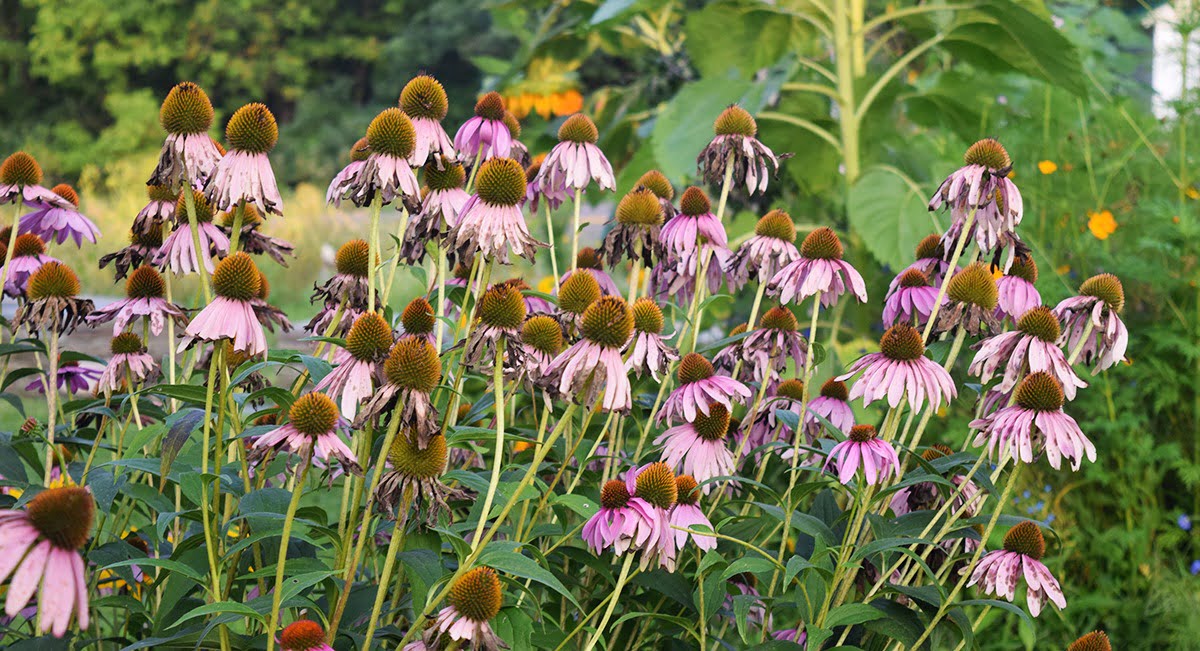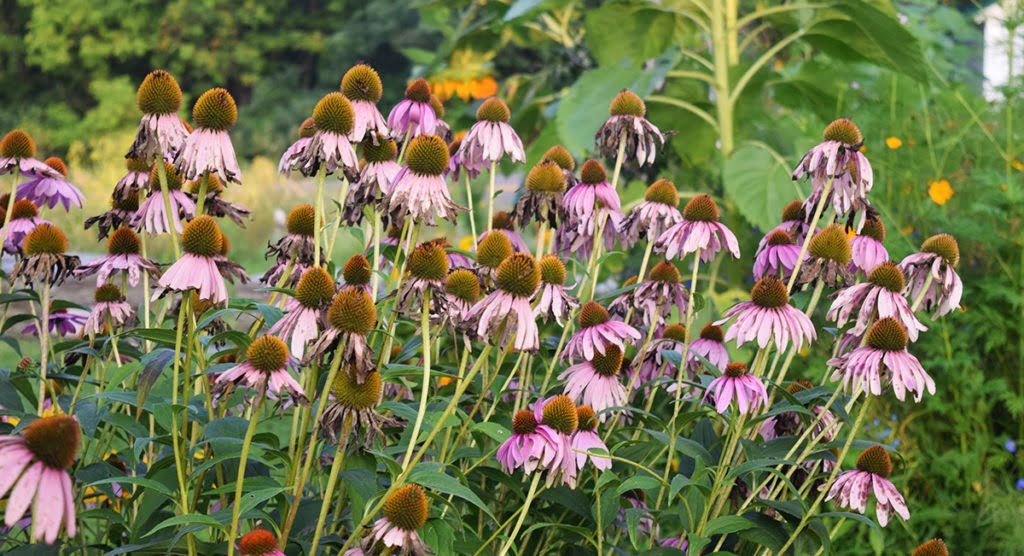
We recommend leaving faded varieties such as Coneflower up for the winter to feed the birds.
It may not be the most fun job in the garden, but pruning in the late season is an important step to make sure your perennials, shrubs and trees are ready for the winter and come back stronger than ever next spring.
Where To Start?
The best place to start when pruning is to remove and damaged, diseased or dead stems from your plants. This helps prevent nasty insects from damaging your plant and keeps it from getting any further disease.
After you’ve done this, prune any branches that are growing across the plant (entangling with other branches), branches that are growing straight up from the trunk, and branches that have shot up near or from below the ground.
This is important maintenance necessary for all of your plants to make sure they come back healthy and strong next season.
Perennial Flowers
Although it may look better to deadhead perennial flowers with faded blooms, we recommend leaving varieties such as black eyed susans and coneflower until the early spring. Birds and other wildlife will enjoy snacking on the seeds and these flowers act as nature’s birdfeeder. Other varieties can be cut back to a few inches from the ground in the late fall, which helps them to branch and become stronger for next season.
Annual Flowers
Throughout the season, deadheading annual flowers every week helps keep them blooming longer in the garden. At the end of the season, you can dig these annuals up and discard them, or pot them and bring them indoors to enjoy throughout the winter months.
Roses
Roses that bloom once per season should be pruned as soon as they are finished blooming. Roses that bloom more than once can be pruned at the end of the season to shape the plant, or in the early spring to remove branches that have been damaged by the winter.
Spring-Blooming Trees & Shrubs
Spring-blooming varieties such as Rhododendron, Lilac and Forsythia produce flowers directly from the wood that was formed in the last season. This means the best time to prune these varieties is in the late spring, after they’ve finished blooming. Do not prune in the winter as you could remove flower buds.
Summer-Flowering Trees & Shrubs
Summer-blooming plants, such as Butterfly Bushe and Potentilla produce flowers from new growth in the season. These varieties should be pruned in the late fall or winter while they are dormant. We recommend cutting them all the way down to the ground in the late winter for stronger, vigorous growth come summer.


